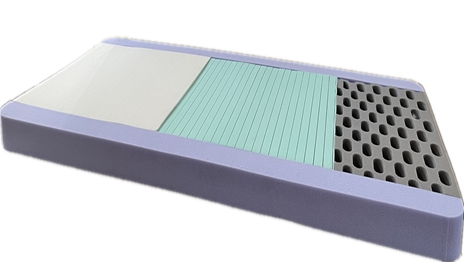cheap pressure injury care
Affordable Pressure Injury Care Essential Tips for Effective Management
Pressure injuries, also known as pressure ulcers or bedsores, occur when there is prolonged pressure on the skin, typically over bony areas of the body. They can develop quickly and lead to serious complications if not addressed promptly and effectively. While they often affect individuals with limited mobility, anyone can be at risk. However, managing pressure injuries doesn’t have to be costly. Here are several affordable strategies for effective care.
Understanding Pressure Injuries
Before delving into care techniques, it’s crucial to understand the stages of pressure injuries
. They are classified into four stages1. Stage 1 The skin is intact but may appear discolored. There may be pain or itching. 2. Stage 2 The skin is broken, and there's a shallow ulcer, often resembling a blister. 3. Stage 3 The ulcer is deeper and may involve fat tissue, with more severe tissue loss. 4. Stage 4 The injury is extensive, involving muscle, bone, or supporting structures.
By recognizing these stages early, you can implement timely and cost-effective interventions.
Affordable Prevention and Care Strategies
1. Regular Repositioning One of the simplest and most effective ways to prevent pressure injuries is to change positions regularly. For individuals who are bedridden, shifting weight every two hours can significantly reduce pressure on vulnerable areas. This requires no financial investment but can make a significant difference.
2. Use of Support Surfaces While advanced support surfaces, like specialized mattresses and cushions, can be expensive, there are lower-cost alternatives. Simple foam cushions or even rolled towels can help redistribute pressure. Look for options that can be easily cleaned and are durable to ensure long-term use.
cheap pressure injury care

3. Maintain Skin Hygiene Keeping the skin clean and moisturized is vital in preventing pressure injuries. Use mild soap and warm water for daily cleansing. Pat the skin dry gently rather than rubbing, as this can cause further irritation. Application of affordable moisturizers can aid in maintaining skin integrity.
4. Nutrition Matters Proper nutrition plays a key role in skin health and healing. Ensure a diet rich in protein, vitamins, and minerals which are essential for skin repair. Incorporating affordable food sources like beans, lentils, eggs, and greens can offer significant benefits without breaking the bank. Staying hydrated is equally important, so encourage an adequate fluid intake.
5. DIY Dressings While specialized dressings may be costly, alternative materials can sometimes be just as effective. For example, clean, non-stick gauze can be used as a dressing for stage 1 or 2 injuries. Keep dressings clean and change them regularly to prevent infection.
6. Education and Training Understanding how to manage pressure injuries is crucial. Many organizations offer free or low-cost training for caregivers and family members on how to assess and care for pressure injuries effectively. Take advantage of these resources to enhance your knowledge and care techniques.
7. Monitor and Document Regular monitoring of skin integrity is key. Keeping a log of any changes or developments in the skin condition helps in making timely interventions. This doesn’t require more than a notebook or digital device, but it can significantly improve care outcomes.
8. Seek Professional Advice While many methods can be done at home, do not hesitate to seek professional advice when necessary. Many clinics offer free consultations or can provide advice over the phone. Accessing community health resources can also offer additional support.
Conclusion
Affordable pressure injury care is achievable with knowledge and proactive measures. By understanding risk factors, regularly assessing skin condition, and implementing preventive strategies, you can effectively manage and prevent pressure injuries. This not only enhances quality of life but also helps avoid the financial burden associated with advanced care and treatment. Stay proactive and informed, and remember that the best care often starts with simple, consistent practices.
-
Mattresses Designed for Back Pain ReliefNewsAug.08,2025
-
Innovative Wave Mattresses for Ultimate ComfortNewsAug.08,2025
-
High-Quality Mattresses for Hospital BedsNewsAug.08,2025
-
High-Quality Mattresses for Every NeedNewsAug.08,2025
-
Healthcare Foam Mattress: Sleep Better, Heal FasterNewsAug.08,2025
-
Cube Mattress for Daily ComfortNewsAug.08,2025
-
How Hospital Mattress Choices Directly Impact Patient Comfort and CareNewsAug.05,2025

